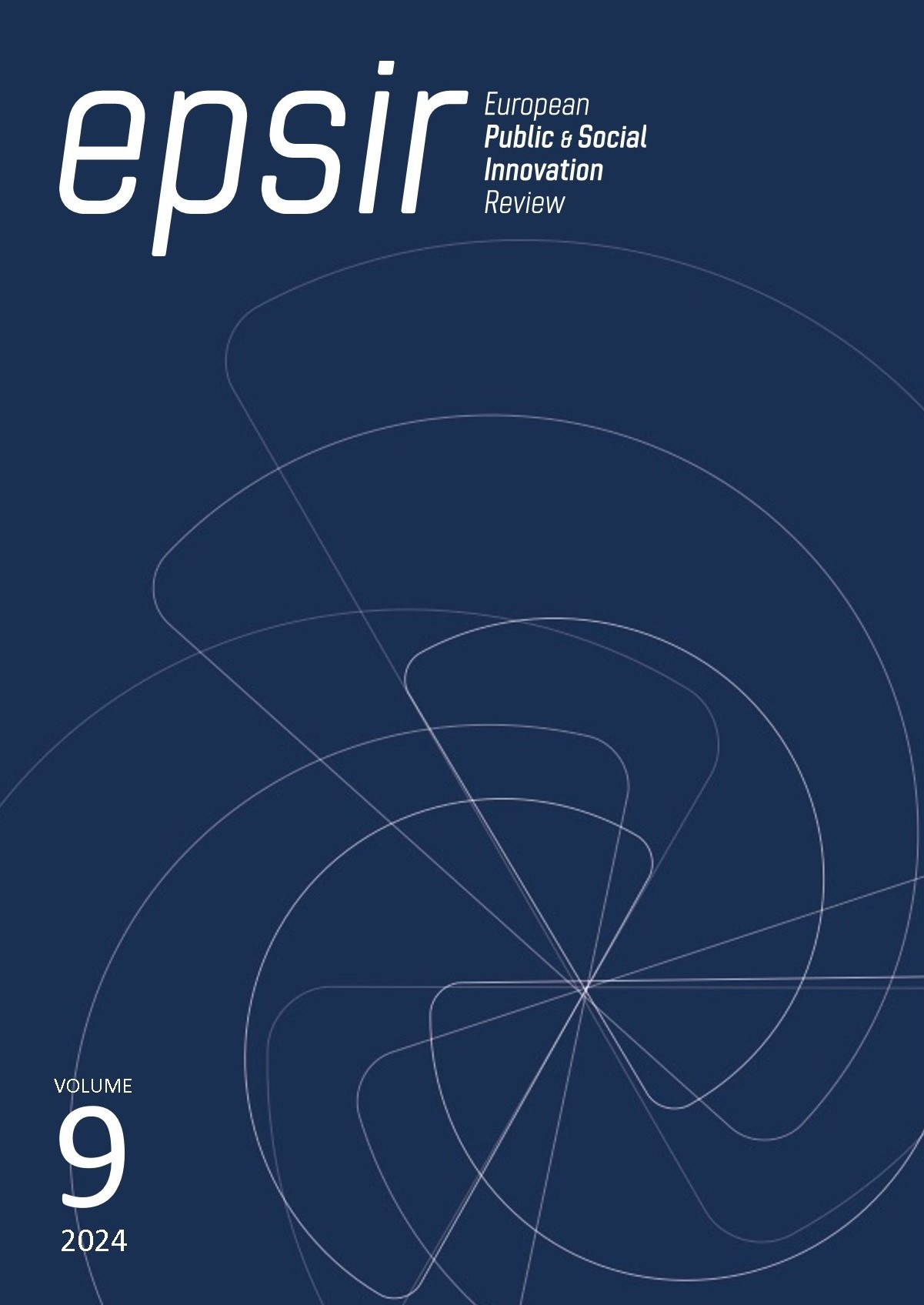Dissolving to materialize: The paradox in contemporary architecture and the CEM Method
DOI:
https://doi.org/10.31637/epsir-2024-1576Keywords:
Materialize, context, experience, manifesto, tradition, flexibility, innovation, architectureAbstract
Introduction: Contemporary architecture faces the paradox of adapting to a world in constant change and uncertainty where standardization, predominant over customization, underscores the need for adaptable systems capable of addressing diverse contexts. Methodology: This study connects historical moments from modern architecture to local tradition, projecting into the future. Through the CEM method (Context, Experience and Manifesto), the works The Crown Hall and KAIT Workshop are analyzed, which are deconstructed to generate a new theoretical framework. Results: The approach proposes innovative solutions to the challenges of the contemporary built environment. Discussions: The interconnection between the architectural tradition of the modern movement, the local context and future needs is explored, integrating cultural and contextual values into contemporary architecture. Conclusions: This research offers a useful tool for the craft, practice and teaching in architecture seeking to face the complexities of today's world when designing flexible and customized architectural solutions.
Downloads
References
Borrego, I. (2010). Un arquitecto es una casa (An architect is a house). “Domesticando la realidad.” Mairea Libros.
Cabas, M. R. (2014). Espacio arquitectónico contemporáneo bajo los conceptos de Ítalo Calvino. Traza, 10, 74-85. https://www.researchgate.net/publication/331586259
Casado López, G. (2018). Propuesta metodológica para el estudio de las obras de arquitectura contemporáneas. Estudios Sobre Arte Actual, 6, 61-72. https://dialnet.unirioja.es/servlet/articulo?codigo=6861740
Castro Marcucci, A., Belandria, D. y Machado, M. V. (2021). La liquidez en las formas de la arquitectura japonesa contemporánea. Una mirada a la obra de Junya Ishigami. Módulo Arquitectura CUC, 28, 189-224. https://doi.org/10.17981/MOD.ARQ.CUC.28.1.2022.06 DOI: https://doi.org/10.17981/mod.arq.cuc.28.1.2022.06
Coll-Barreu, J. (2010). El Crown Hall no es transparente. Mies Van Der Rohe y el recinto inexpugnable. Ra. Revista de Arquitectura, 12, 119–132. https://doi.org/https://doi.org/10.15581/014.12.4457 DOI: https://doi.org/10.15581/014.12.4457
Cornelis van de Ven, F. V. (1981). El espacio en arquitectura. La evolución de una idea nueva en la teoría e historia de los movimientos modernos. Cátedra.
Donaire, J. (2012). Transparencia impenetrable en la obra de SANAA. En Rethinking the city + Principia Architectonica (pp. 34-47). Mairea - ETSAM.
Espuelas, F. (2023). La cruz y la cortina. Mies o la moderna iconoclastia. ZARCH, 20, 86-97. https://doi.org/10.26754/ojs_zarch/zarch.2023207455 DOI: https://doi.org/10.26754/ojs_zarch/zarch.2023207455
Frampton, K. (2014). Historia crítica de la Arquitectura Moderna. Gustavo Gili.
Frohburg, J. (2019). Ellington bajo el cristal: El baile anual demuestra la versatilidad del Crown Hall. BAC, Boletín Académico. Revista de Investigación y Arquitectura Contemporánea, 9, 45-68. https://doi.org/10.17979/bac.2019.9.0.4582 DOI: https://doi.org/10.17979/bac.2019.9.0.4582
García Pérez, A., Soto, Á. y Maroto, J. (2013). El KAIT de Ishigami como manifiesto de una arquitectura contemporánea. Universidad Politécnica de Madrid.
Ishigami, J. (2016). De la libertad en arquitectura. El Croquis 184, Christian Kerez (2010-2015), Junya Ishigami (2005-2015).
Jaraíz Pérez, J. (2012). De la sala hipóstila al bosque estructural de SANAA. En Rethinking the city + Principia Architectonica (pp. 57-62). Mairea - ETSAM.
Jaraíz Pérez, J. (2012). El parque. Espacios, límites y jerarquías en la obra de SANAA [Universidad Politécnica de Madrid]. https://oa.upm.es/12741/1/JOSE_JARAIZ_PEREZ.pdf
Juarranz, Á. (2018). La naturaleza como experimento constructivo. El Pabellón de Japón para la XI Bienal de Venecia (Junya Ishigami, 2008). RA, Revista de Arquitectura, 20, 192-203. https://doi.org/10.15581/014.20.192-203 DOI: https://doi.org/10.15581/014.20.192-203
Lizondo-Sevilla, L., García-Requejo, Z. y Santatecla-Fayos, J. (2023). Exposición de Arquitectura de Ludwig Mies van der Rohe. Art Institute of Chicago, 1938-1939. EGA Revista de Expresión Gráfica Arquitectónica, 28(48), 86-99. https://doi.org/10.4995/ega.2023.18901 DOI: https://doi.org/10.4995/ega.2023.18901
López del Río, A. (2021). La casa como fragmento de naturaleza. Tres mecanismos de la arquitectura japonesa contemporánea. ZARCH, 17, 154-167. https://doi.org/10.26754/ojs_zarch/zarch.2021176039 DOI: https://doi.org/10.26754/ojs_zarch/zarch.2021176039
Montaner, J. M. (1997). La modernidad superada. Arquitectura, arte y pensamiento del siglo XX. Gustavo Gili.
Morelli, M. (2018). La experiencia del espacio. La idea del espacio en la arquitectura según Paul Linder.
Museum of Modern Art of New York, N. Y. (1975). Five architecs: Eisenamn, Graves, Gwathmey, Hejduk, Meier. Oxford University Press.
Muzquiz Ferrer, M. (2017). Arquitectura como fenómeno sensorial: una aproximación al espacio desde la interacción física y emocional [Universidad Técnica Superior de Madrid]. https://oa.upm.es/47578/1/TFG_Muzquiz_Ferrer_Mercedes.pdf
Paz, O. (1981). Los hijos del Limo. Del romanticismo a la vanguardia. Seix Barral.
Prada Pérez de Azpeitia, M. de. (2003). Componer con vacío. Notas sobre la configuración del vacío en el arte y la arquitectura. Cuaderno de Notas, 9, 57-84. https://oa.upm.es/49296/
Rojas-Granados, A. J. (2020). La arquitectura del vacío. El edificio sin uso y la experiencia como estrategias de apropiación [Universidad Católica de Colombia]. https://hdl.handle.net/10983/24548
Salazar González, G. y Jiménez-Fajardo, I. (2022). La experiencia del espacio-tiempo arquitectónico. Una perspectiva fenomenológica del sensorium. Revista de Arquitectura, 27(43), 162-179. https://doi.org/10.5354/0719-5427.2022.67419 DOI: https://doi.org/10.5354/0719-5427.2022.67419
Santatecla Fayos, J., Lizondo Sevilla, L. y García Requejo, Z. (2018). Relaciones entre Arquitectura y Estructura. Arquitectura estructural en Mies van der Rohe. ZARCH, 11(11), 78-93. https://doi.org/10.26754/ojs_zarch/zarch.2018113207 DOI: https://doi.org/10.26754/ojs_zarch/zarch.2018113208
Santatecla Fayos, J., Más Llorens, V. y Lizondo Sevilla, L. (2010). El Crown Hall. Contexto y proyecto. Proyecto, Progreso, Arquitectura, 1, 46. https://doi.org/https://doi.org/10.12795/ppa.2010.i1.03 DOI: https://doi.org/10.12795/ppa.2010.i1.03
Trillo Martínez, V. (2016). Traslaciones Miesianas. Proyecto, Progreso, Arquitectura, 15, 42-55. https://doi.org/https://doi.org/10.12795/ppa.2016.i15.03 DOI: https://doi.org/10.12795/ppa.2016.i15.03
Downloads
Published
How to Cite
Issue
Section
License
Copyright (c) 2024 Jorge Carlos Carrasco Aparicio, Manuel Agustín Gamarra Sampén

This work is licensed under a Creative Commons Attribution-NonCommercial-NoDerivatives 4.0 International License.
Authors who publish with this journal agree to the following terms:- Authors retain copyright and grant the journal right of first publication with the work simultaneously licensed under Creative Commons Non Commercial, No Derivatives Attribution 4.0. International (CC BY-NC-ND 4.0.), that allows others to share the work with an acknowledgement of the work's authorship and initial publication in this journal.
- Authors are able to enter into separate, additional contractual arrangements for the non-exclusive distribution of the journal's published version of the work (e.g., post it to an institutional repository or publish it in a book), with an acknowledgement of its initial publication in this journal.
- Authors are permitted and encouraged to post their work online (e.g., in institutional repositories or on their website) prior to and during the submission process, as it can lead to productive exchanges, as well as earlier and greater citation of published work (See The Effect of Open Access).




